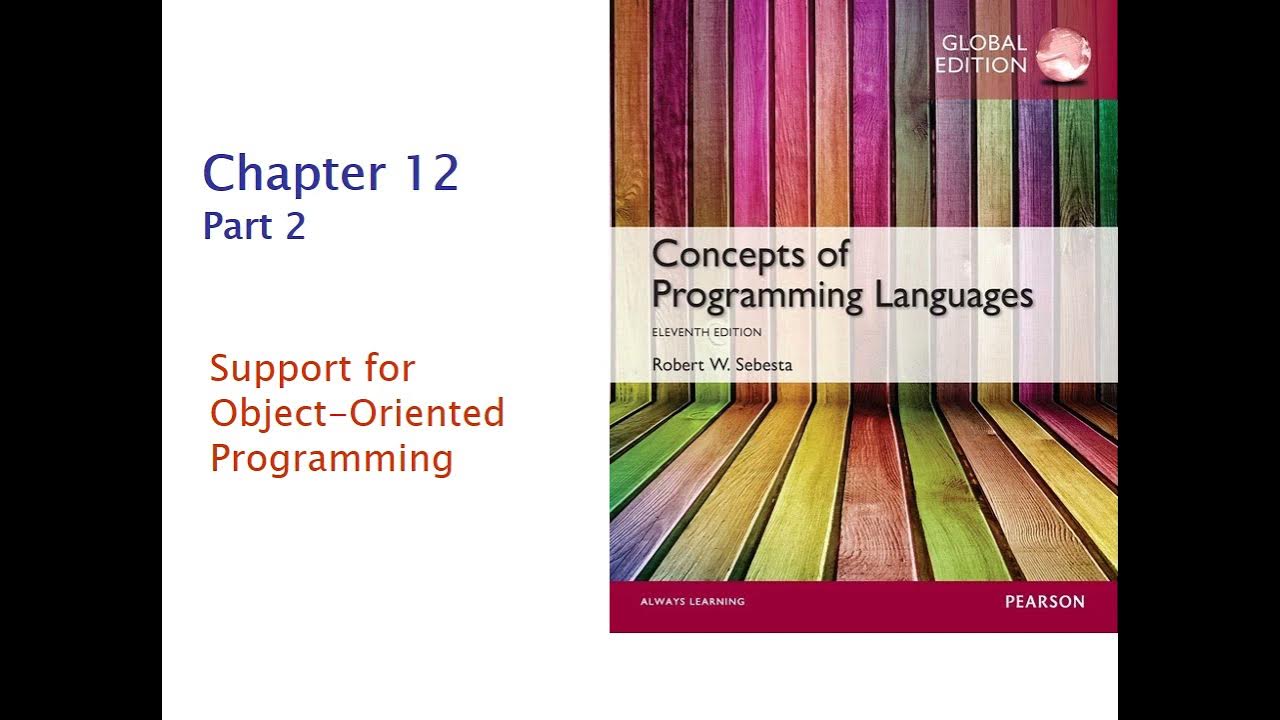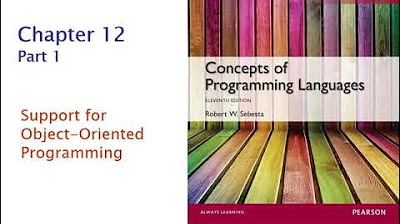Pemrograman Berbasis Open Source (Python) - Polymorphism
Summary
TLDRThis video delves into the concept of polymorphism in object-oriented programming, explaining its relevance and application. The speaker outlines how polymorphism allows for multiple forms of behavior across different classes, with similar methods but varying implementations. Examples include fish classes with shared methods but different behaviors, and the combination of inheritance and polymorphism in scenarios like animal classes or vehicles. The discussion also highlights how polymorphism contrasts with inheritance, emphasizing the flexibility it provides in software design by enabling method reuse with different underlying implementations.
Takeaways
- 😀 Polymorphism is a concept commonly used in object-oriented programming (OOP) to allow different classes to share the same method, but with different implementations.
- 😀 The term 'polymorphism' literally means 'many shapes,' representing the ability of an object to take multiple forms.
- 😀 An example of polymorphism can be seen in fish classes like sharks and clownfish, where both share methods like 'swim' and 'skeleton,' but the implementations differ.
- 😀 Polymorphism is beneficial in programming because it enables functions to work with entities of different types at different times.
- 😀 The concept is also closely related to inheritance, where one class inherits from another, but polymorphism allows methods to vary in their execution across different classes.
- 😀 An example of polymorphism in action is the 'swim' method in both shark and clownfish classes, where the method is shared but behaves differently in each class.
- 😀 Polymorphism can be used with functions as well, not just methods, where similar functions are used across different types of entities.
- 😀 When discussing polymorphism, it's important to understand the difference between method content and method signatures—methods with the same signature but different content demonstrate polymorphism.
- 😀 Inheritance and polymorphism can be combined in OOP to create more flexible and extensible code, such as classes like 'animal' with subclasses like 'dog,' 'wolf,' and 'lion.'
- 😀 Super and polymorphism differ in that 'super' is used for inheritance and method overriding, whereas polymorphism focuses on methods with the same signature but different internal logic.
Q & A
What is the primary use of polymorphism in the context of programming?
-Polymorphism is primarily used to allow methods to have the same name but behave differently depending on the class they belong to. This concept is useful in object-oriented programming to enable different classes to share methods but have different implementations, making code more flexible and reusable.
How does polymorphism relate to the concept of virus mutation?
-Polymorphism is likened to virus mutation in the sense that just as a virus changes its form to bypass antivirus software, polymorphism allows objects of different classes to have the same method names but behave differently, adapting to different contexts while maintaining the same interface.
Can you explain the concept of polymorphism with an example from the transcript?
-An example from the transcript involves two classes, 'Shark' and 'ClownFish'. Both classes have the same method names like 'swim', 'backward', and 'skeleton'. However, the content of the methods in each class is different. This is polymorphism in action—same method names but different implementations.
What is the difference between polymorphism and inheritance?
-Polymorphism allows methods to share the same name but have different implementations in different classes, while inheritance refers to one class inheriting properties and methods from a parent class. Polymorphism focuses on method behavior, whereas inheritance focuses on the structure and attributes of classes.
What is an example of polymorphism in animals as mentioned in the transcript?
-In the transcript, polymorphism is demonstrated with animals like wolves, dogs, and lions. These animals may have the same method 'sound', but the content of their sound differs—dogs bark, wolves howl, and lions roar. Despite having the same method, the behavior is different in each class, which is an example of polymorphism.
How can polymorphism be applied in vehicles like cars and electric cars?
-Polymorphism can be applied to vehicles such as Honda and Tesla. Both may have the same method to start the engine, but the implementation differs—Honda starts with gas, while Tesla starts with electricity. This is polymorphism because the method name ('startEngine') is the same, but the implementation differs based on the class.
What role does method overriding play in polymorphism?
-Method overriding is a key aspect of polymorphism. It allows a subclass to provide a specific implementation of a method that is already defined in its parent class. This ensures that the method behaves differently based on the subclass, even though the method name remains the same.
What is the relationship between polymorphism and encapsulation in object-oriented programming?
-Polymorphism and encapsulation both aim to enhance the flexibility and security of code. While polymorphism allows methods to have multiple forms, encapsulation restricts access to the internal state of objects. Together, they allow for safe and adaptable code where the internal workings are hidden, but behavior can change depending on the object.
Can polymorphism be used with functions in addition to classes?
-Yes, polymorphism can also be used with functions. As mentioned in the transcript, functions can have the same name but different implementations based on the type of data or the class they are associated with. This allows functions to be used flexibly with different types of data while maintaining a consistent interface.
How does polymorphism help with code reusability and maintainability?
-Polymorphism allows different classes to use the same method name, but with different implementations. This makes code more reusable since you can call the same method on different objects without worrying about their specific types. It also makes code easier to maintain, as changes to the method's behavior can be made in one place, and the method will still work across various classes.
Outlines

This section is available to paid users only. Please upgrade to access this part.
Upgrade NowMindmap

This section is available to paid users only. Please upgrade to access this part.
Upgrade NowKeywords

This section is available to paid users only. Please upgrade to access this part.
Upgrade NowHighlights

This section is available to paid users only. Please upgrade to access this part.
Upgrade NowTranscripts

This section is available to paid users only. Please upgrade to access this part.
Upgrade NowBrowse More Related Video

Java Basic OOP Concepts | Features of OOPs in Java | Learn Coding

Object Oriented Programming - The Four Pillars of OOP

Encapsulation in Python | Getters & Setters methods | Python Tutorials for Beginners #lec101

Dasar PBO Python #6 - Konsep Class Polymorphism

COS 333: Chapter 12, Part 2

COS 333: Chapter 12, Part 1
5.0 / 5 (0 votes)